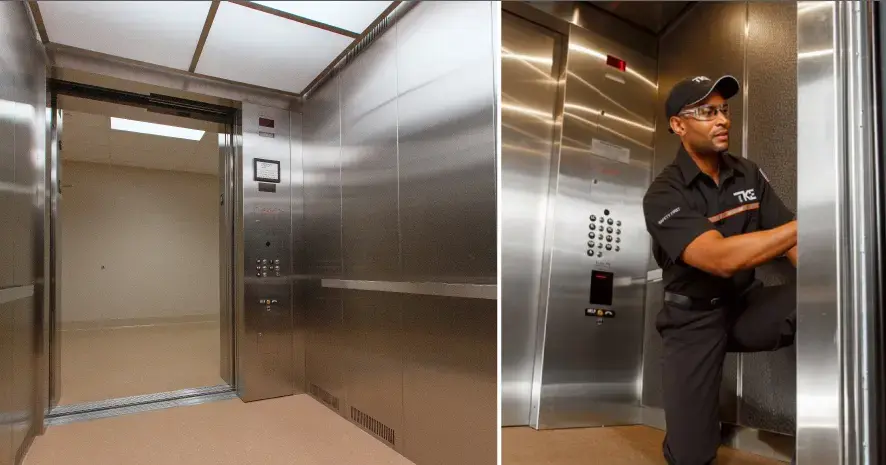When Does a Double-Sided Elevator Make Sense?
by Michael Simmons, DBA, New Installation Sales
If you are like me, there are only a few things that will wake you in a cold sweat at night. For me, they are the following:
1. Wondering if I left the gas stove on by accident.
2. Thinking about paying for college for four kids along with the cost of my daughter’s wedding.
3. Perhaps the scariest — whether a building should have a double-sided elevator.
Thankfully, I have some research that hopefully can alleviate at least one of your midnight concerns. This article is designed to provide the reader with a cursory understanding of double-sided elevators and why they may be the right fit for your building.

What Is a Double-Sided Elevator?
As the name suggests, a double-sided elevator — more commonly known as an elevator with dual openings — has two separate sets of doors. In the vast majority of cases, this would be a set of front and a set of rear doors.
If you have stayed in a hotel or perhaps visited a hospital recently, you’ve more than likely encountered a double-sided elevator, as this is a very common application.
A less common type of double-sided elevator might have a front door and a side door. These are somewhat rare and much more costly than a front/rear due to the engineering of the lifting and guide mechanisms.
Why Use a Double-Sided Elevator?
There are several instances in which a double-sided elevator may be right for you. The first example, and perhaps most common, would be a situation where one elevator entrance services the public and the other entrance services a private area.
In a hotel scenario, the front entrance may service each floor of the building for the public while the rear entrance only services a kitchen or laundry area for the hotel staff. In this case, the rear door would typically require a keyswitch or card reader to access that area.
The second example is when a new building is added to a pre-existing building. When this happens, it may be necessary to utilize a double-sided elevator to bridge uneven floors (Strakosch & Caporale, 2010). A front entrance might service the old part of the building while the rear entrance services the new side.
The third potential use for a double-sided elevator is in a two- or three-stop elevator where heavy traffic is anticipated. Strakosch and Caporale suggest that front and rear openings allow for quicker loading and unloading compared to an elevator with a single front opening (2010). The front and rear option allows for two separate lobbies on the same floor.
One final potential use for a double-sided elevator would be in a service elevator or freight elevator application.
For example, if a vehicle is being driven onto the elevator or a forklift is being used to move material, a front and rear application would allow the vehicle to drive forward to enter the elevator and forward to exit the elevator. This eliminates the need to back out of the elevator and improves the overall safety of the task. This application could also be handy in apartment building where bulky furniture is being moved.
Is a Double-Sided Elevator the Right Choice for You?
Here are a few things to consider if you plan on purchasing a double-sided elevator.
1. Do you want to have a control panel for each entrance? If so, that will increase the price of the elevator.
2. If the double-sided elevator is included in a group of other single-opening elevators, it may be necessary to provide special controls to remove the double-sided elevator from group operation so that extended wait times are not experienced by those wishing to access the elevator with the rear entrance (2010).
Having completed further research on this subject, I know for certain that I will have a much easier time sleeping through the night. I hope this article helped answer some questions that you may have had.
However, if you have more questions, the dedicated Sales Team at TK Elevator is here to help. Use the Office Finder to find your local branch and a sales representative waiting to serve your needs.
References: Strakosch, G. R., & Caporale, B. (2010). The Vertical Transportation Handbook (4th ed.). John Wiley & Sons.
 United States
United States

